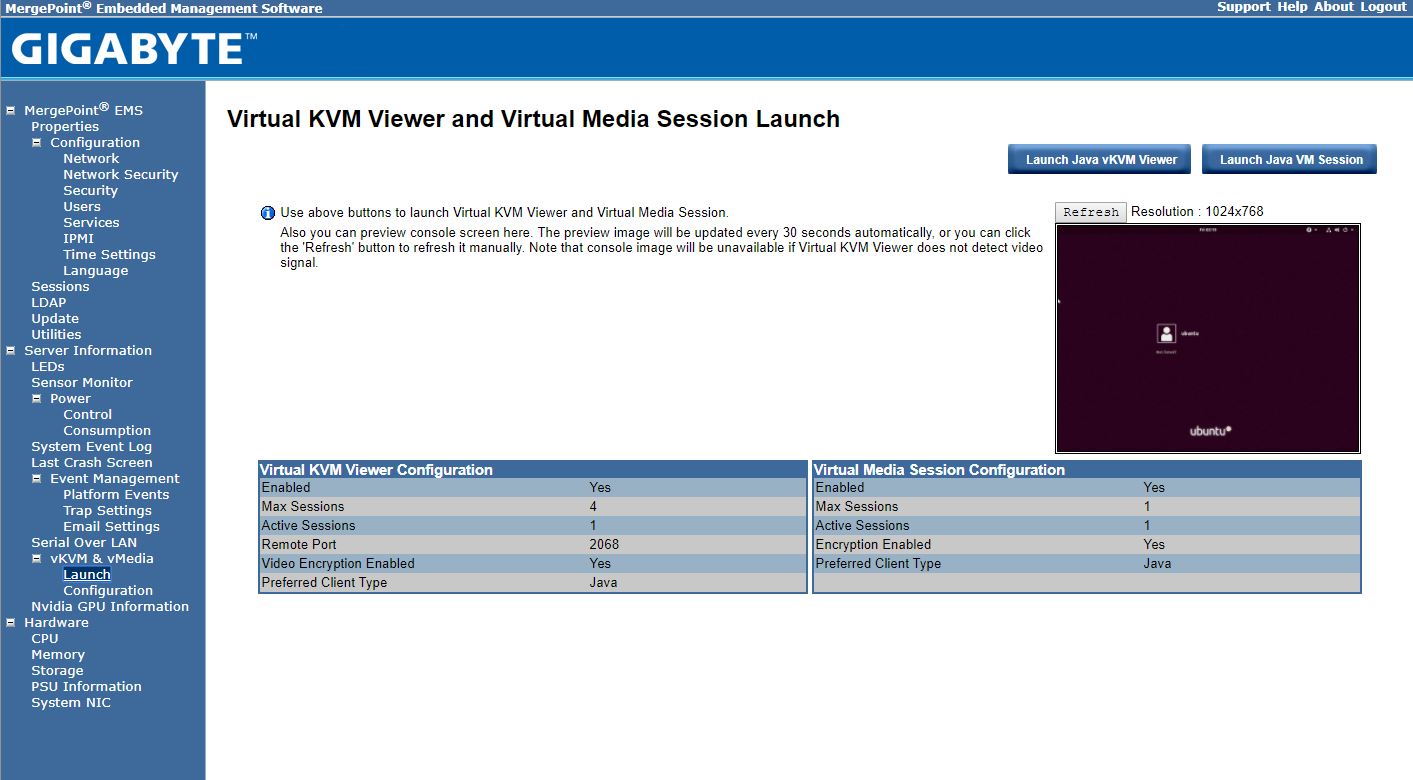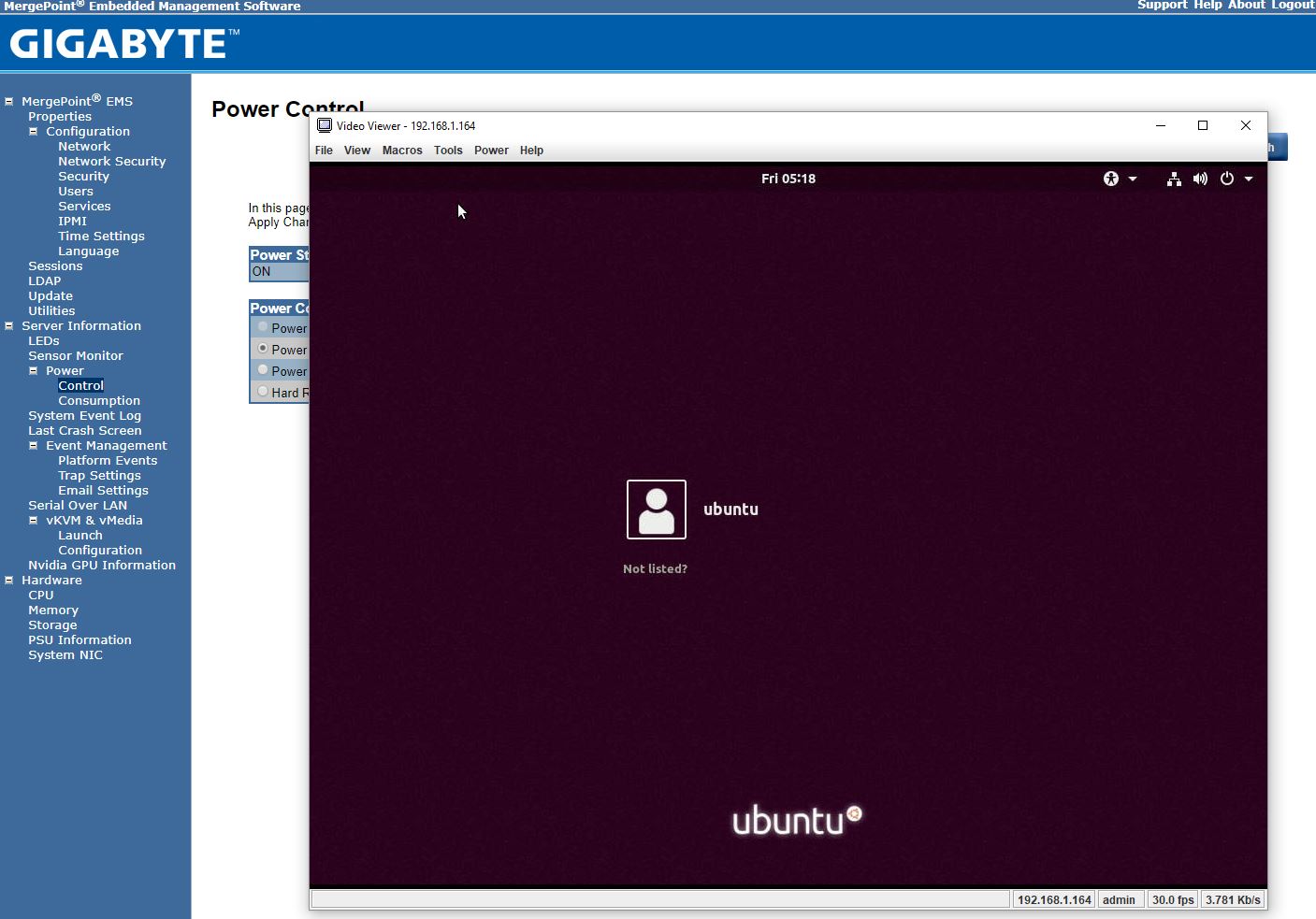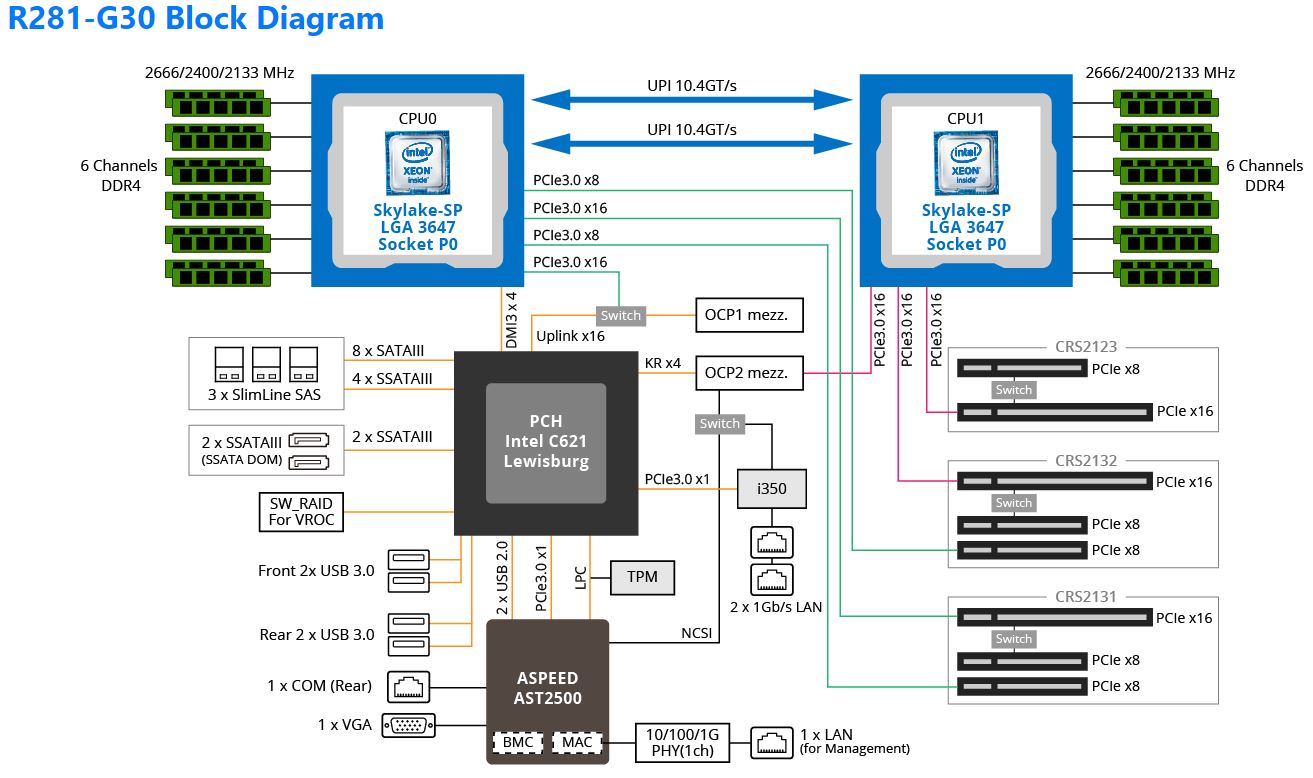Gigabyte R281-G30 Management
These days, out of band management is a standard feature on servers. Gigabyte offers an industry standard solution for traditional management, including a Web GUI. This is based on the ASPEED AST2500 solution, a leader in the BMC field.

With the Gigabyte R281-G30 solution, one has access to the Avocent MergePoint based solution. This is a popular management suite that allows integration into many systems management frameworks.

Gigabyte allows users to utilize Serial-over-LAN and iKVM consoles from before a system is turned on, all the way into the OS. Other vendors such as HPE, Dell EMC, and Lenovo charge an additional license upgrade for this capability (among others with their higher license levels.) That is an extremely popular feature because it makes remote troubleshooting simple.
At STH, we do all of our testing in remote data centers. Having the ability to remote console into the machines means we do not need to make trips to the data center to service the lab even if BIOS changes or manual OS installs are required.
Gigabyte R281-G30 Block Diagram
With these platforms that are pushing the capabilities of embedded SoC’s, the block diagram becomes an important tool to see how everything is connected. Here is a block diagram that shows the block diagram of the Gigabyte R281-G30.

One can see the dual UPI links, the SlimLine SAS connectors for SATA and the PCIe configuration of the server from this diagram. Overall, it is about what we would expect but it shows clearly just how much is going on in the system.
Next, we are going to look at the Gigabyte R281-G30 performance, followed by power consumption and our final words.



